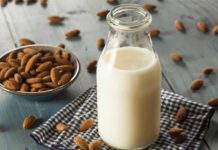
Food fads hit the market, but only to be replaced with the new ones. During this continuous cycle, few foods or chemicals are ruthlessly demonized; at times rightfully, but many times, not so rightfully! Nowadays, lectins are in the limelight with so-called experts suggesting to avoid them. So, is lectin really bad? Or, is it just another victim of a marketing gimmick or high-protein, low-carbohydrate diet fad? Kimberly Snyder here sheds light on this debatable topic and discusses its importance in our diet.
Lectins are a large family of proteins that are mostly found in legumes and grains. Of late, they have grossed attention of the health world and are even being compared to gluten. A few health experts also discourage consumption of lectins and recommend a lectin-free diet. What people don’t understand is that everything has good and bad aspects and this pretty much applies to nearly all ingredients and foods we eat. Lectins are no exception. While certain lectins have toxic properties, most are actually nontoxic.
As a matter of fact, all foods contain lectins to some extent, but only 30% of foods that we consume contain a considerable amount of lectins. Dairy products, seafoods and plant products from the Nightshade (Solanaceae) family contain significant amount of lectins. This protein is found abundantly in legumes and grains, including beans, soybeans and peanuts.
Should You Really Be Worried About Including Lectins in Your Diet?

Lectins have been associated with irritable bowel syndrome, obesity and inflammation. There are various kinds of lectins and all of them have different tasks. However, their primary task is to make the body cells and molecules stick to each other for accomplishing various biological activities.
Lectins are also believed to possess anti-cancerous properties. While their sticky nature usually helps glue cells and molecules together, this characteristic property of lectins at times hinders the absorption of varied nutrients into the bloodstream. This led to the assumption that the intake of lectins by people, who already have compromised gut health, could result in digestive issues.
Possible Health Hazards Associated with Lectins Consumption
Well, it is quite difficult to categorize lectins as different foods contain several different types of lectins and that too, in varying concentrations. With numerous animal studies, there have been enough evidence of inflammation due to lectin consumption, but human studies are yet not sufficiently conclusive. As a result, the roles of various dietary lectins are still not clear in humans and so are their adverse effects.
Kimberly further discusses purported health consequences of lectin consumption as well as the reality behind them:
- They Can Cause Weight Gain: The truth, however, is totally opposite. Studies have shown that consumption of whole grains and legumes normalizes body mass index (BMI).
- They Lead to Inflammation: This claim is still debatable. Animal studies have found that inflammation is associated with lectin consumption. Vegetables and fruits actually help in reducing inflammation markers. [1] However, whether lectins cause inflammation in humans is yet to be investigated.
- They are Toxic in Nature: Few Legumes like kidney beans, when consumed raw, actually cause nausea, vomiting and diarrhea, but it is totally okay to consume cooked beans. It is recommended to cook your beans for at least 30 minutes before consumption.
Some possible side effects of Lectin Consumption are further discussed by Kimberly Snyder
- Lectins can lead to flatulence. They might cause nausea, diarrhea, vomiting and similar issues.
- Lectins might also cause various digestive issues. Usually, these do not persist for long.
- Lectins might also prevent proper absorption of nutrients, making them “anti-nutrients.”
- In certain cases, they might also lead to skin rashes, joint pain and general inflammation.
How to Neutralize Lectins?
Here, Kimberly offers tips to reduce lectins from your food naturally. Anyone can follow these tips to ward off risks related to lectin:
- Cooking: Several studies have shown that cooking your legumes for 5 to 10 minutes can actually reduce lectins’ toxicity and activity.
- Soaking: Soaking is yet another way to reduce the lectin activity and toxicity. You can soak your legumes and grains in water overnight and don’t forget to change the water regularly.
- Fermenting: Fermenting is a great way to lower their toxicity and make them easily digestible. Fermented products such as natto, miso and tempeh are widely consumed worldwide.
People with moderate to good gut health will not have any issues upon lectin consumption. However, if you already have a compromised gut health, lectins might lead to various health issues.
When people encourage following a lectin-free diet, we must understand that there have not been enough human studies to conclude that avoiding foods with lectins can be actually beneficial in some way or other. Avoiding lectins means that you have to stop eating whole grains, potatoes, peppers, fruits, seeds and vegetables along with eggs and dairy – stuffs that forms a major part of your grocery list. A lectin-free diet essentially eliminates all the nutrients from your diet and hence, you must not even try to consider such diet.
Also, as stated above, consumption of lectins in excess and without following proper cooking techniques, can cause several health issues. In general, whole grains and legumes provide many health benefits.
In the end, Kimberly Snyder recommends not to completely eliminate lectin-containing foods from the diet, but their toxicity must be reduced by soaking, cooking or fermenting before consumption.










